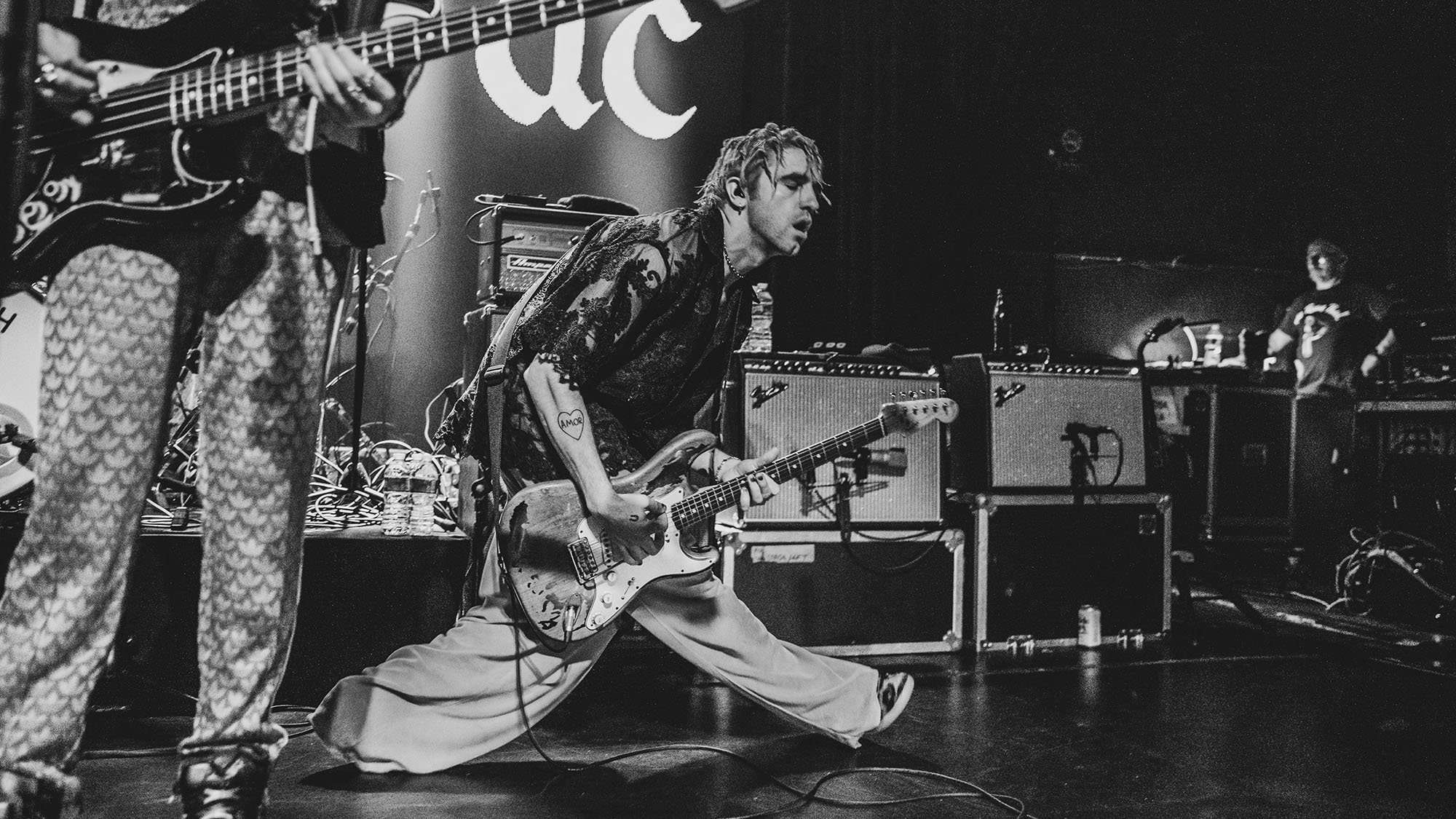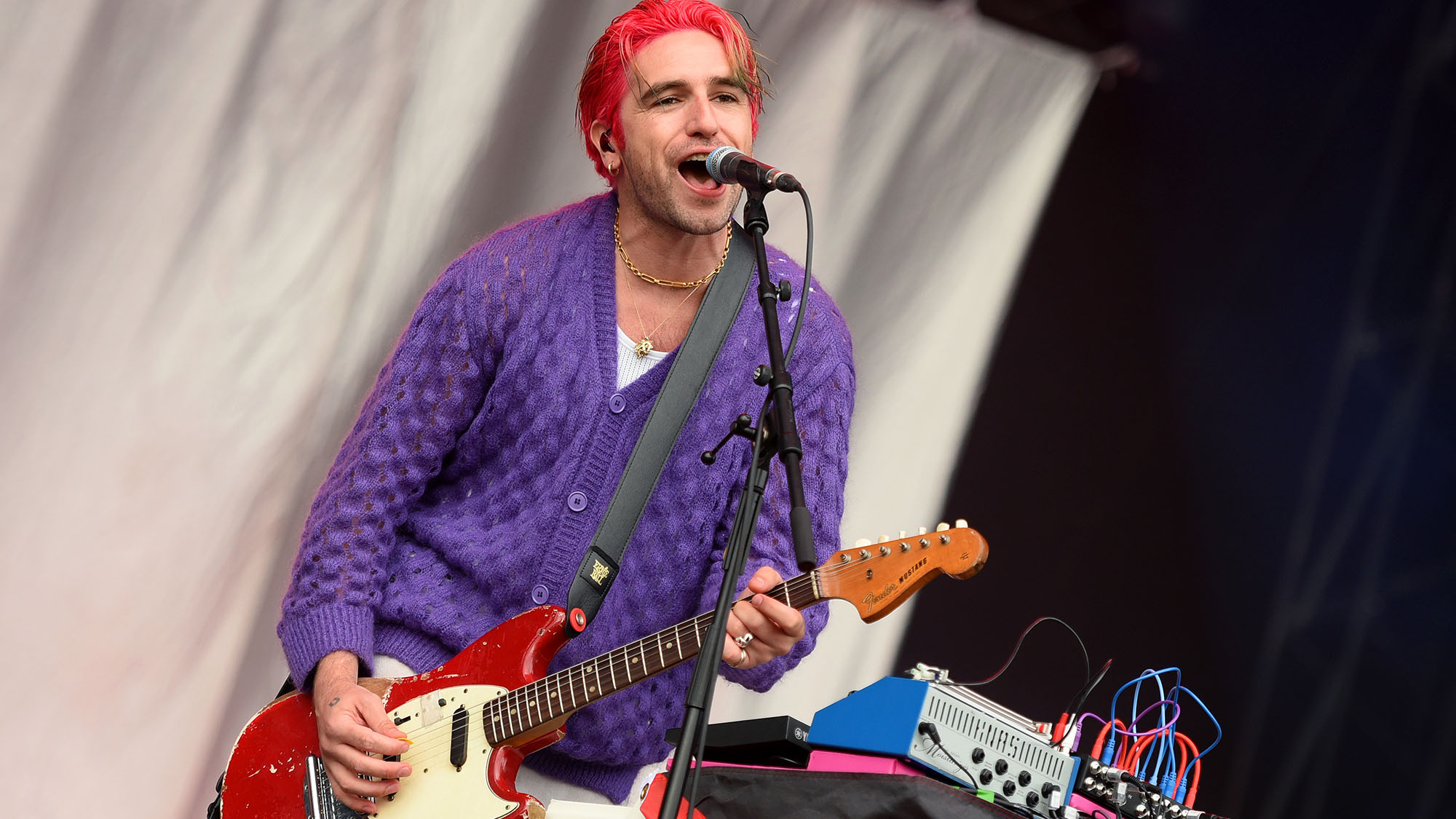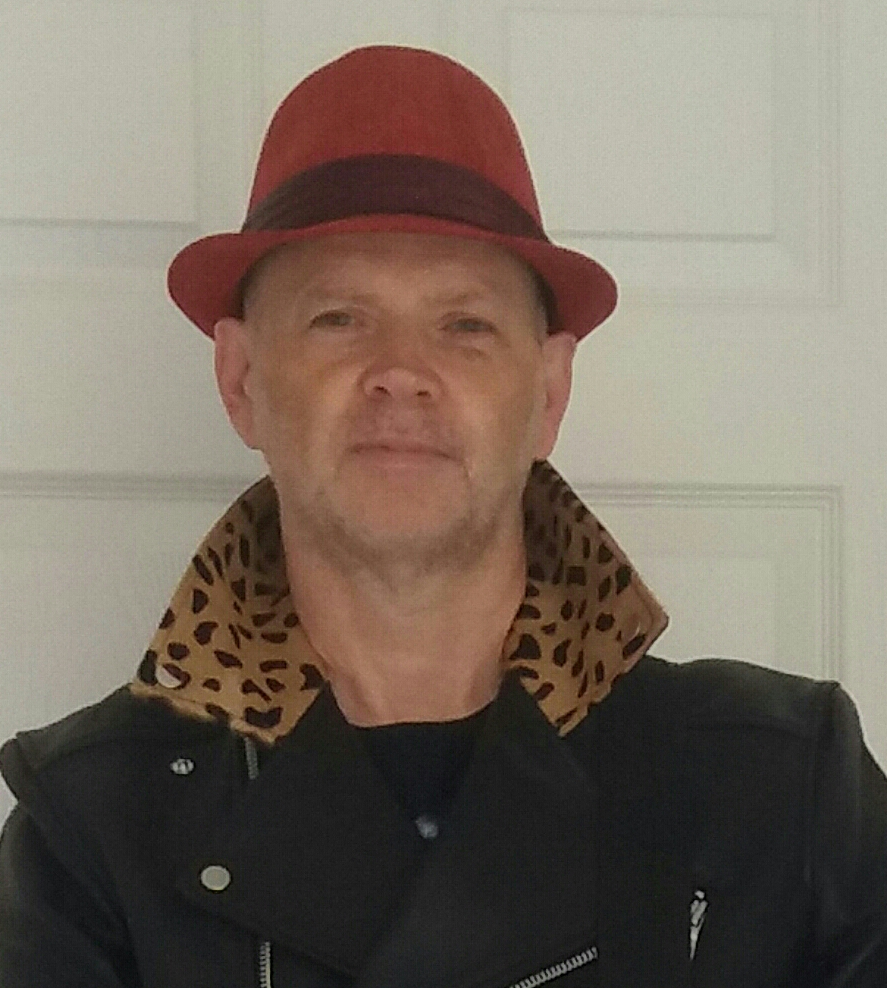“When I heard Nirvana’s Live at Reading it became less about learning solos than putting the guitar in front of an amp and making it scream”: Fontaines D.C.’s Carlos O’Connell on playing Rory Gallagher’s Strat and why a spring reverb is the best overdrive
One half of the Fontaines D.C. six-string machine talks songwriting and influences, and admits that he, too, is a disciple of YouTube’s Kurt Cobain tone guru Aaron Rash

Fontaines D.C. have come a long way since meeting at college in Ireland in 2014. A few short years after breaking out of the rehearsal room and into clubs around Ireland and the U.K., rapidly building on the huge buzz around the band, they managed to release three singles in 2018, kicking off with Liberty Belle.
A deal with Partisan Records soon followed, and Dogrel, their debut album, was released in 2019, peaking at Number 9 in the U.K. That same year they set their sights on America, which involved playing nine sets at SXSW over five days and appearing on The Tonight Show Starring Jimmy Fallon.
Their efforts Stateside saw them rewarded in 2021, when their second album, 2020’s A Hero’s Death, was nominated for a Grammy for Best Rock Album. That was followed by 2022’s Skinty Fia, home of the brooding but catchy Jackie Down the Line, with its pulsing, Watching the Detectives-like riffs aplenty.
The band have just released Romance, which sees them take their sound a long way from the spiky, angular post-punk vibe of their debut record. Guitarists Carlos O’Connell and Conor Curley weave atmospheric textures that underpin singer Grian Chatten’s emotive vocals to create a sound that is simultaneously familiar, yet distinctive enough to set them apart from the typical guitar-driven indie band sound.
There’s a clear evolution in the band’s sound from the first album through today. Is that a conscious progression?
“It’s totally natural. I think it’s having access to more music, having a broader knowledge and wider experiences. I think you can draw a clear-cut line from the first album to this one, where ideas and approaches we’ve taken have become more developed with each record."
Does the increasing familiarity with the studio and the recording process factor into that?
All the latest guitar news, interviews, lessons, reviews, deals and more, direct to your inbox!
“It definitely does – that’s a really big thing. When we recorded the first album, I only had one overdrive pedal and a reverb pedal. And one guitar, a Danelectro, which had a very thin sound. I just made it work, but we didn’t really have the experience, knowledge or confidence to try different ideas and equipment in the studio. By the stage we’re at now, the studio has really become another instrument.”
We tried to get the songs, and even the sounds, as close as possible to how we wanted the finished album to sound to give us a lot more control
Do you already know what you’re going to record when you go into the studio?
“We try to be as prepared as possible. For this album, we had four weeks of writing and pre-production at a studio that a friend of mine owns in London. We tried to get the songs, and even the sounds, as close as possible to how we wanted the finished album to sound to give us a lot more control.
“We all come up with ideas that we usually just record on our phones, then we put them into a folder that everyone can access and come up with ideas. We’d name the ones we liked and put those songs up on a board and plot out what we’re going to do.
“We always have about 30 ideas for each album, then we play around with them and know quite quickly which ones aren’t working. Some go on hold for future records even if we don’t think they’re quite right for the album we’re working on.”
There is a great sense of space on the album, even where there are quite a few layers of guitars.
“I feel that the longer I spend in the studio, the more my ears get attuned to where the lines will go and what to leave out. The producer, James Ford, has the ability to leave a lot of space in all of the ranges, particularly at the top and bottom ends.
“He’s so tidy in the way he organizes things, that there always seem to be some spare frequencies where you could maybe put down a high guitar part that would normally be in conflict with cymbals or something. The more space you have, the more powerful the mix sounds.”
Do you have some songs earmarked as potential singles when you’re recording?
“No, that never really happens – we give every song the same focus and attention. Every song has the same value to us; we never know what the singles are going to be until after we’ve finished.”
How do you and Conor divide the guitar parts?
“It’s usually very organic. We just play ideas to each other and try to work out something that leaves a space for each part. It usually comes out great because it’s all about listening to what each other is doing, rather than what we’re doing. Sometimes it’s just down to finding different chord inversions.
“Death Kink has a great part that Conor played, where I wasn’t really thinking of adding much to it, when we were preparing the song. When we were in the studio, I was listening to him playing those chords over and over, and I tried to find some extensions above the chords he was playing, and making some noises as well on the guitar.
“It opened the song up into another world, yet originally I wasn’t even planning on playing anything much. I think you can shape the sound of what the other person is playing with just a handful of notes.”
Death Kink has one of the few out-and-out guitar solos. Was that you or Conor?
“Actually, Grian [Chatten, the band’s singer] played the solo on that song. [Laughs] He was listening back to the track, and he was really excited about it and kept asking if he could give it a go as he had some ideas. He’s a really good guitarist, actually. Conor and I had been passing a guitar back and forwards in the control room, looking for ideas – and Grian just fucking nailed it.
“I guess it’s quite ironic that one of the few solo opportunities was taken by the singer. [Laughs] To be fair to him, though, he’s a brilliant guitarist in his own right and he played a lot of the acoustic parts on the album. We’ll spend a lot of time in the rehearsal room with all three of us playing guitar.”
What were the main guitars you and Conor used for the album?
“My main guitar was the red ’60s Fender Mustang with the short scale that I’ve been playing for a while. I’ve also got a blue one now, which is the same age but is the normal-scale length. My sound was a mix of those two and a Rory Gallagher Strat, which records brilliantly.
“I was thinking of selling it for a while to get another Strat that I could make more ‘my own’, but the sound is so great, and it’s such a workhorse that I decided to just keep it. I also used a vintage Epiphone Coronet that Alex Turner [Arctic Monkeys] lent me. It had one P-90 on it and sounded fantastic. Conor played his Jazzmaster a lot, which is a newer American vintage-spec model.”
Were you a fan of Rory Gallagher when you got the Strat?
“Not really, but only because that’s a genre of music I don’t really listen to. He was a fantastic guitarist, though. I saw it on the wall in a store in Chicago and thought it looked interesting, as it was so distressed to look like his old guitar. I tried it and thought it was just a brilliant instrument.”
Go-to amps?
“Conor’s main amp was a Fender Princeton, and he also used a Fender Vibrolux. My favorite studio amp is a Fender Deluxe Reverb. James Ford just puts a Shure SM57 on the center of one of the cones, and that picks up all the bite of the sound. I’ve used that since the first album.
“We had some Fender Twin Reverbs in the big room upstairs at the studio, which were mic’d up and mixed into the sound of our primary amps. I watched Aaron Rash, who has a YouTube channel that explores the tone secrets of Kurt Cobain’s sound, and I saw him demoing early ’90s G12M-70 Celestion speakers. It just clicked for me that this was the sound I was trying to find.
“I’ve put them into my Fender Twin, which is my live amp, and now it’s going to be the only amp I use for anything – studio or live. They are a speaker that people generally hate – I think they used to use them in Marshalls at one time."
You’re going to have to hunt down a bunch of spares for the Celestions now, aren’t you?
“That’s right. [Laughs] I’ve already got requests on various websites and I’m constantly watching for them coming up for sale on the internet.”
I watched Aaron Rash, who has a YouTube channel that explores the tone secrets of Kurt Cobain’s sound, and I saw him demoing early ’90s G12M-70 Celestion speakers. It just clicked for me that this was the sound I was trying to find
What music inspired you to play, and what was your first guitar?
“It was all the classic rock like AC/DC, Guns N’ Roses and Led Zep. I’d learn some of the solos and that, but when I really got inspired was when I heard Nirvana’s Live at Reading [2009]. I was at summer camp, and one of the older guys there introduced me to it. It was just incredible, even from that opening feedback.
“That release of pent-up aggression resonated with me, as I was quite angry as a kid, and that record changed everything. It became less about learning solos than putting the guitar in front of an amp and making it scream.”

“My first guitar was a cheap Encore Strat copy. After that I got an Epiphone Les Paul copy that I had for ages, then I progressed to a better Epi Les Paul, which I sold when I was about 20. Then I got a Danelectro, which was a totally different sound altogether. [Laughs]
“It was because of the Danelectro that I moved onto the Mustang, which I thought did everything the Danelectro did, but better. I suppose that brought everything all the way back to Nirvana in a way, which makes sense, given how much I loved Kurt’s playing.”
You have quite a packed pedalboard. If you could only pick a couple of pedals for your core sound, what would they be?
“Firstly, it would be a spring reverb that I’ve had since day one. It’s the first pedal I ever got, and I build my whole sound around that. The other main pedal would be a Soundgas Type 636P, which was ridiculously expensive. It’s based on the preamp channel on a Grampian spring reverb unit that Pete Townshend used to use as his overdrive.
“Soundgas realized that the preamp was so specific that they decided to reproduce it. I think it’s genuinely the best overdrive pedal in the world. It’s a pedal with one knob and a button – you just turn it up or down. If I could get one of those actual spring tanks, I’d be happy and not need anything else. [Laughs]”
- Romance is out now via XL Recordings.
Mark is a freelance writer with particular expertise in the fields of ‘70s glam, punk, rockabilly and classic ‘50s rock and roll. He sings and plays guitar in his own musical project, Star Studded Sham, which has been described as sounding like the hits of T. Rex and Slade as played by Johnny Thunders. He had several indie hits with his band, Private Sector and has worked with a host of UK punk luminaries. Mark also presents themed radio shows for Generating Steam Heat. He has just completed his first novel, The Bulletproof Truth, and is currently working on the sequel.









